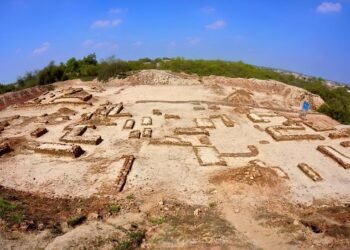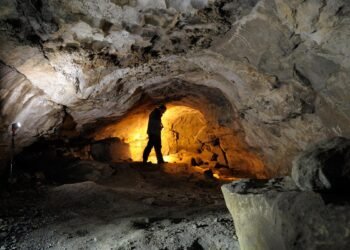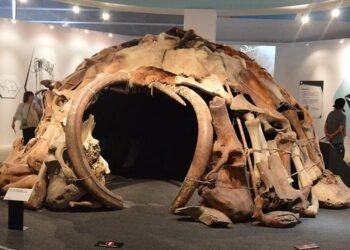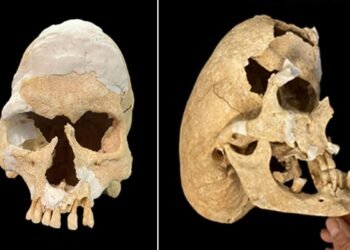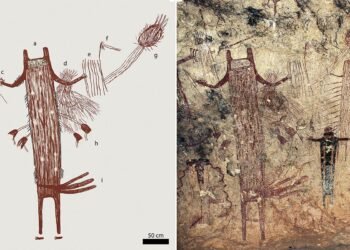Archaeologists from Edinburgh have unearthed more than 100 Iron Age settlements in the southwestern regions of Scotland, dating back to the time of Roman presence in the area.
Their extensive survey, conducted north of Hadrian’s Wall, aimed to better understand the impact of Rome’s rule on the lives of the native inhabitants.
The researchers meticulously explored a vast area spanning nearly 600 square miles around Burnswark hillfort in Dumfries-shire, which served as a location where Roman legions campaigned during the Empire’s expansion northwards.
Prior archaeological investigations between Hadrian’s Wall and the Antonine Wall, the Empire’s more northerly frontier, primarily emphasized the Roman perspective. These studies focused predominantly on the camps, forts, roads, and walls constructed by the Roman Empire to manage northern Britain, rather than examining sites linked to indigenous tribes.
The new research initially concentrated on Burnswark, known for hosting the largest concentration of Roman projectiles ever discovered in Britain, a testament to the formidable firepower of Rome’s legions.
The research team expanded their exploration across 580 square miles beyond the hillfort, employing cutting-edge laser-scanning technology. Despite some prior scrutiny of the region, the researchers identified 134 previously undocumented Iron Age settlements, increasing the total count of known settlements in the area to over 700.
The discovery of numerous small farmsteads during the survey holds particular significance. These settlements provide valuable insights into the everyday lives of the majority of the indigenous population.
Analysis of the findings revealed that these sites were evenly dispersed across the landscape, with certain areas displaying dense clusters, suggesting a well-organized settlement pattern.
The construction of Hadrian’s Wall commenced in CE 122, and for approximately two decades, it marked the northernmost border of the Roman Empire, stretching between the Solway Firth and the River Tyne. In CE 142, the Romans erected a second defensive line, the Antonine Wall, between the Firth of Forth and the Firth of Clyde, indicating further territorial expansion. However, this second wall was eventually abandoned, with the Empire retracting its frontier southward to Hadrian’s Wall.
The outcomes of this recent study, conducted collaboratively by the University of Edinburgh, Historic Environment Scotland, and the Scottish Universities Environmental Research Centre, have been documented in the journal “Antiquity.”
This research forms part of the broader Beyond Walls project, which aims to shed light on ancient sites extending from Durham in the south to the fringes of the Scottish Highlands in the north.
Dr. Manuel Fernández-Götz, a study author from the University’s School of History, Classics, and Archaeology, remarked, “This is one of the most exciting regions of the Roman Empire, as it represented its northernmost frontier.” He added, “The land we now know as Scotland was one of very few areas in Western Europe over which the Roman army never managed to establish full control.”
Fellow author Dr. Dave Cowley of Historic Environment Scotland emphasized the significance of the discoveries, stating, “The discovery of so many previously unknown sites helps us to reconstruct settlement patterns. Individually, they are very much routine, but cumulatively they help us understand the landscape within which the indigenous population lived.” — University of Edinburgh



